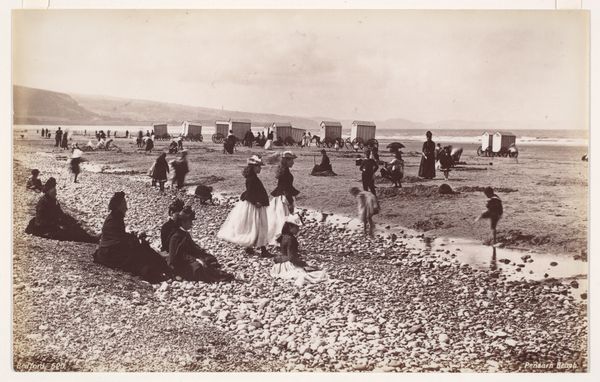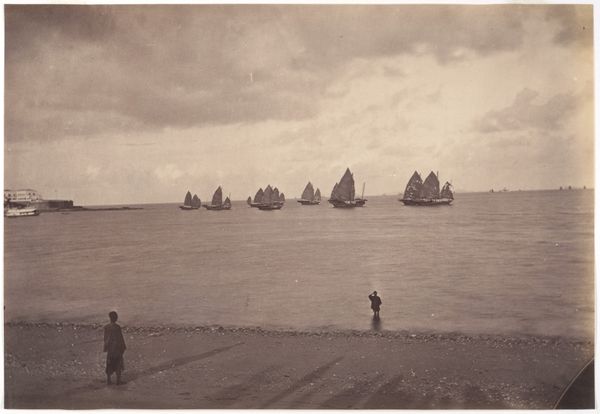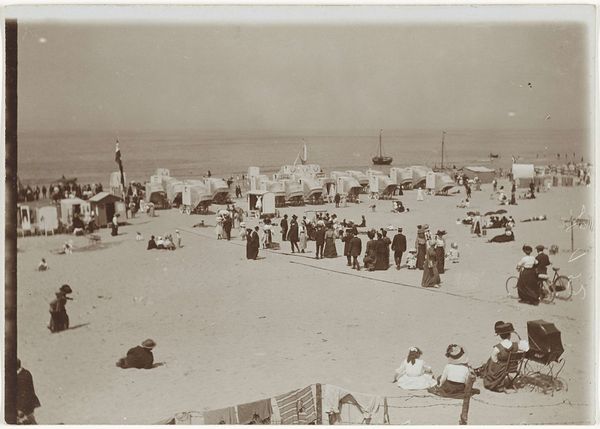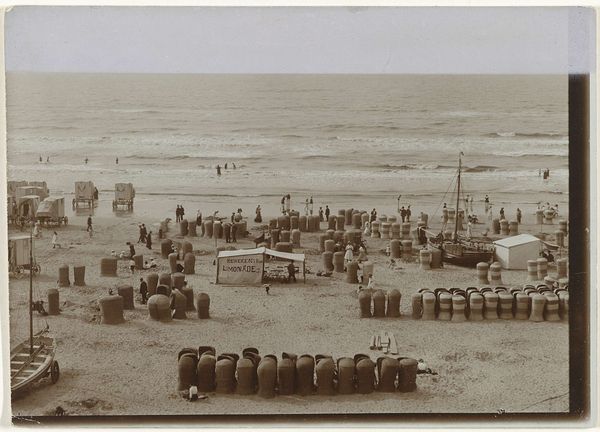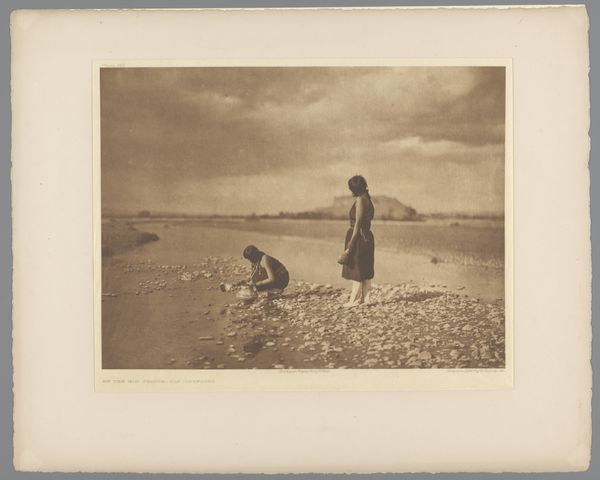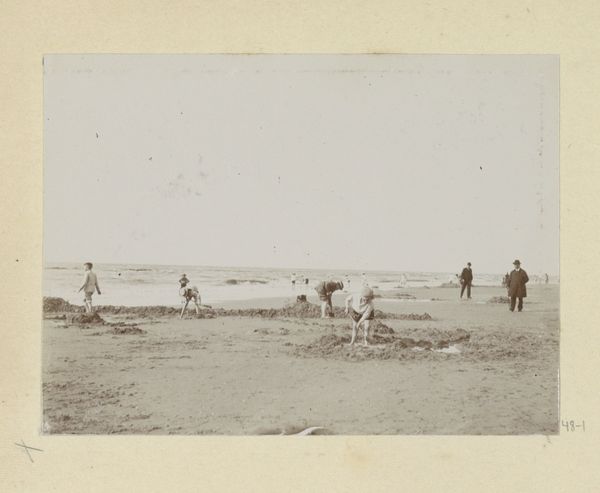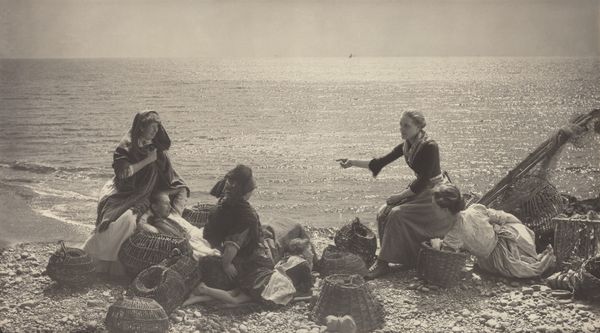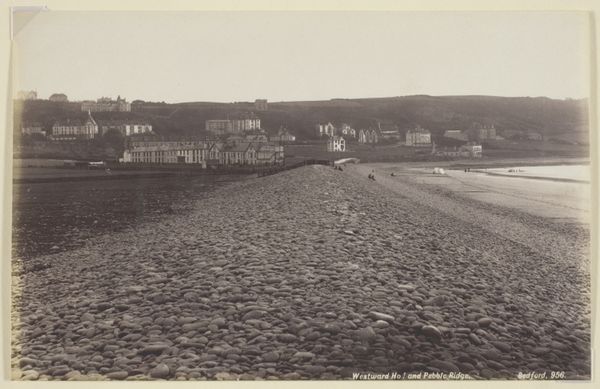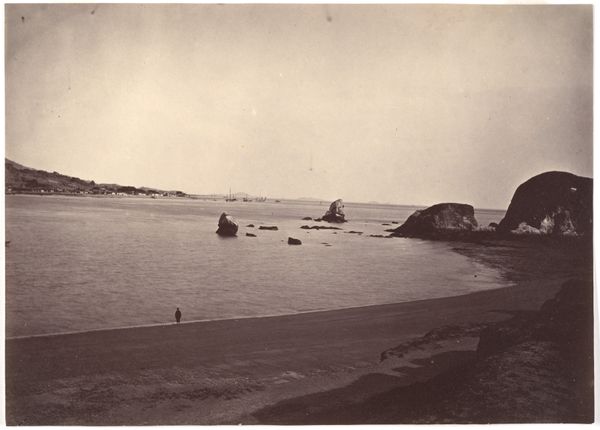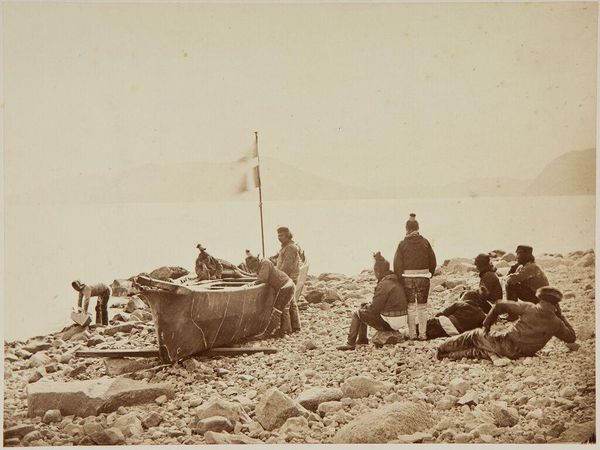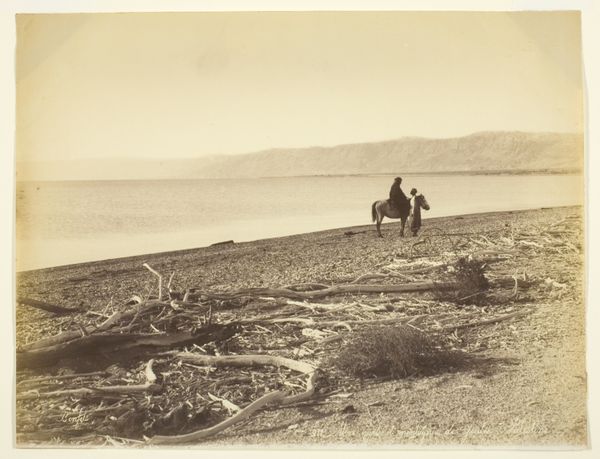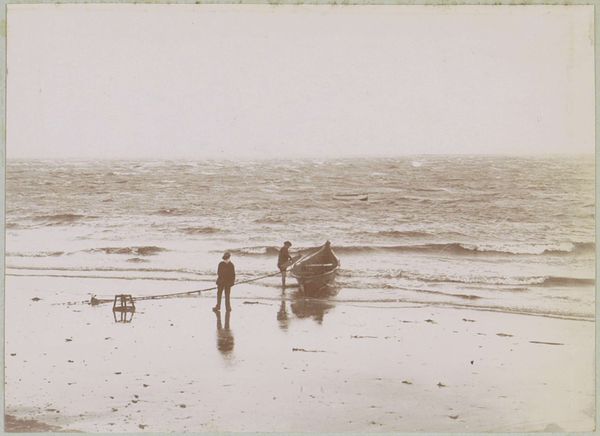
Copyright: Public Domain
Editor: This gelatin-silver print, "Pensarn Beach," by Francis Bedford, from the 1870s, captures a scene of leisure. The sheer number of figures scattered across the beach is striking. It feels almost staged in its depiction of Victorian society. What is your perspective on this piece? Curator: Well, beyond the surface representation of leisure, I'm interested in the materiality of the photograph itself and the processes involved in its creation and consumption. Consider the gelatin-silver print; it's a product of industrial chemistry, not just artistic vision. Editor: Right, so it's not just about Bedford's artistic choices, but also the broader context? Curator: Precisely. Think about the resources required: silver, gelatin, specialized knowledge, labor to produce the materials, and the economic factors enabling mass tourism and the demand for images like this as souvenirs. What does that line of beach huts along the shoreline suggest about class and leisure for those captured in this image? Editor: I see your point. It's about more than just a pretty picture. It reflects the commercialization of leisure and the means to capture and consume those experiences. Curator: Exactly. And consider how photography itself, once a specialized process, becomes democratized, though always still implicated in social structures. Does viewing the work in this light, considering its materials and social context, change your initial impression? Editor: Absolutely. It's pushed me to think beyond the aesthetic and consider the photograph as a cultural artifact, deeply intertwined with industrial processes and social hierarchies. Thank you for highlighting those production processes. Curator: It's important to consider art as a product of its time, not just an isolated creation. Thinking about materiality allows us to unpack a whole range of social and economic relations embedded within the art object itself.
Comments
No comments
Be the first to comment and join the conversation on the ultimate creative platform.
